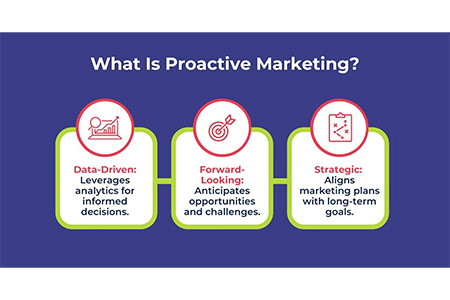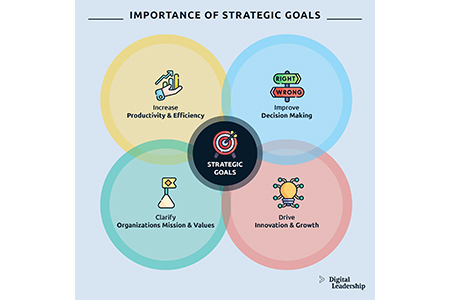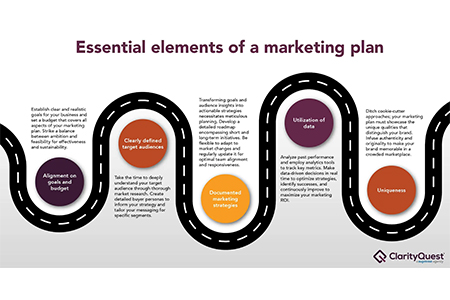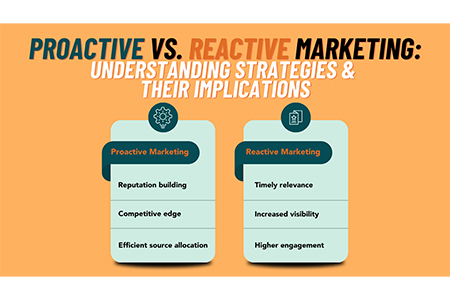What is Proactive Marketing Strategy?
Proactive marketing strategy refers to a deliberate and forward-looking strategy that enables businesses to anticipate customer demands, forecast market evolution, and plan strategically in advance when trends are beginning. Contrary to reactive tactics, which react to competition or crisis only after the event has occurred, proactive marketing is based on insight, imagination, and intent. Preemptive marketing tries to influence customer thought, build demand, and create brand leadership months or even years ahead of time. This is a way of doing marketing that demands continuous market study, creative flexibility, and readiness to be first, not second. Staying ahead of the curve, proactive marketers place their brands at the leading edge—determining the standards, not merely being at standard. In today's super-competitive business environment, being proactive is no longer optional; it is a prerequisite of marketing success in the long run.

Features of Proactive Marketing Strategy
Forward-Looking Approach
A forward thinking marketing strategy prospers on anticipation. It's not merely recognizing where the market stands at present, but where it will be in the future. This means that companies get to foretell consumer requirements, anticipate technology drives, and create products that answer long-term demand. By being ahead of the curve, businesses are able to prevent stagnation and dictate the tempo for their sector. It also helps them stay robust and flexible in a universe of change.
Strategic Planning
Proactive marketing depends on planned long-term thinking for its foundation. A successful marketing approach begins with clear goal definition, followed by step-by-step action planning while merging short-term achievements with long-term brand development. Businesses that practice strategic planning will gain the ability to analyze risk factors and distribute resources most effectively while spotting market opportunities before their competitors do. The campaign maintains consistency through a system that guarantees that all marketing activities advance towards achieving elevated business goals.
Innovation and Creativity
Innovative, think-ahead marketing drives proactive marketing. Brands need to constantly think differently, shattering norms, trying new approaches, and using creativity as a differentiator. That can happen through product roll-out, creative storytelling, or pioneering technology. The aim is not merely to catch up but to surprise, astonish customers by delivering new, innovative value that deeply resonates and sparks engagement.
Market Leadership Focus
Trendsetting marketers are not copycats, they are trailblazers. With thought leadership, these businesses seek to shape public perception, establish industry norms, and drive consumer dialogue. With pioneering ideas and an agenda setting approach, proactive companies command more attention, credibility, and power. They don't wait for the market to shift, they arrive first and insist everyone follows.
Benefits of Proactive Marketing Strategy
Competitive Edge
One step ahead of the fashion places, companies are in a position of strength. Knowing what the customers will be searching for ahead of time, businesses have been able to introduce products and services before others and gain a first mover advantage. This early movement builds stronger brand awareness and often generates more customers gained at reduced cost. Marketing ahead doesn't only allow companies to compete, it allows them to dominate.
Stronger Brand Loyalty
Customers naturally gravitate towards brands that know and anticipate them. Innovative marketing creates this relationship by consistently delivering timely, pertinent value. As customers sense they are being heard and heard out, trust is built and retention is triggered, leading to lasting loyalty. This creates a loyal group of active, repeat buyers over time who act as brand ambassadors.
Higher Profit Potential
By recognizing and capitalizing on developing opportunities before they're saturated, aggressive marketers can release better margins and achieve more returns. Entering a new market early or executing an on-time promotion are just a couple of ways that this technique helps businesses catch attention and revenue during peak interest. In the long run, such clever actions result in quantifiable monetary returns and expandable growth.
Better Resource Allocation
Proactive marketing eliminates guesswork and waste. With projected campaigns, informed decisions, and evidence-based insights, resources are strategically invested, minimizing waste, optimizing ROI. Teams deliver better, budgets are optimized, and execution becomes more predictable. And this leads to better, smoother running operations and improved marketing performance.
Importance of Proactive Marketing Strategy
Shaping Market Trends
Rather than reacting to today's trends, proactive marketing enables brands to carve out what is trending. Innovative ideas, first-to-market products, and masterful messaging are the tools by which businesses shape consumers and lead an industry. This leadership establishes brand influence and positions the business as a go-to brand for its category. Proactive marketers essentially don't wait for change to happen, they make it happen.
Building Long-Term Success
Short-term profits can be won reactively, but sustained success calls for vision. Proactive marketing calls for sustainability by ensuring that brand approaches are always aligned towards long-term growth. With evolving consumer demands to new technology, the strategy enables firms to stay relevant, competitive, and profitable in the long term. It provides a strong basis for building the legacy of the brand.
Minimizing Risks and Surprises
Unpredictability is the nemesis of business expansion. Preemptive marketing minimizes uncertainty through the application of facts to predict shifts in the market. Through proactive planning and responding early, businesses sidestep expensive surprises, better navigate crises, and stay nimble. This risk management component is critical to sustaining brand vitality and riding disruption confidently.
Establishing Thought Leadership
Thought leadership is established by knowledge, timing, and innovation, all major pillars of proactive marketing. The brands that regularly introduce fresh viewpoints while experimenting with innovation and launching major dialogues achieve credibility and influence status. The trust that has been nurtured develops into an authority that attracts end customers, as well as partners and investors, and top tier talent.

Elements of Proactive Marketing Strategy
In-Depth Market Research
It all begins with insight. A deep market study identifies customer habits, market needs, competitor actions, and emerging trends. Active marketing is built on this information to make knowledgeable, forward-thinking choices. Companies that possess these insights will recognize future customer needs and prepare to deliver those offerings before competitors.
Clear Goal-Setting
The effectiveness of an active marketing plan depends entirely on the quality of its objectives. Defining specific, quantifiable aims provides marketing teams with direction and meaning. These objectives inform each campaign, channel choice, and budget decision, ensuring efforts stay true to bigger business goals and long-term achievement.
Customer-Centric Planning
Customer needs are at the center of proactive marketing. Rather than product attributes or sales strategies, this style of marketing focuses on customer experience first. It adapts messaging, product innovation, and service interactions to the changing wants of the target market, resulting in more robust engagement and higher satisfaction.
Flexibility and Adaptability
Proactiveness does not entail strictness. It means being agile enough to make a quick turn when something new comes up in terms of data or opportunities. Teams implementing proactive plans establish flexibility to modify their direction while maintaining forward momentum. Brands become dynamic and competitive when they adopt this level of agility in the ever-changing global marketplace.

Why use Proactive Marketing Strategy?
Being proactive gives brands a roadmap to become not only successful but also to actually survive in fluid environments. Looking ahead to customer needs and aligning strategies to the future direction of the markets, businesses create a first-mover edge that sets them apart. This solves for improving operational effectiveness, positioning the brand, and opening doors for innovation. It also grants more efficient budgeting and much quicker decision-making. New product introduction, selling into a new market, or optimizing end customer experiences, each of these fronts becomes less uncertain and creates more impact with these methods. With markets being so competitive and customer expectations changing at such a fast pace, proactive marketing isn't just a good idea; it's a requirement for true longevity and growth.

4 Proactive Marketing Strategies
Gain In-Depth Customer Insights
Building a personal connection with consumers is a wonderful opportunity. Creative marketing approaches, via behavioural studies, data analysis, and consumer feedback, discover what inspires, angers, or motivates consumers; this information allows for fitting choices to be made for a stronger message and product.
Foster Authentic and Engaging Customer Interactions
People want authenticity. Innovative brands engage in sincere conversations over social media, targeted e mails, and live events. These conversations build confidence and create an emotional bond that leads to customer loyalty for the brand.
Leverage AI for Predictive and Personalized Marketing
Artificial intelligence brings accuracy to proactive marketing. Through the analysis of enormous sets of data, AI provides the capability to forecast future purchasing behavior and make offers personal. This leads to more effective targeting, better timing, and better conversion rates, without intrusiveness.
Plan and Execute Seasonal Campaigns Ahead of Time
Seasonal marketing is most effective when not hectic. Proactive planning guarantees that campaigns are timely, pertinent, and in line with customer anticipation. From promotional offerings during holidays to trade events, early action maximizes outcomes and reduces pressure.
Difference Between Proactive and Reactive Marketing Strategy
| Aspect | Proactive Marketing Strategy | Reactive Marketing Strategy |
|---|---|---|
| Approach | Anticipates and plans for future trends | Responds to existing events or competition |
| Mindset | Long-term, visionary thinking | Short-term, problem-solving focus |
| Market Positioning | Shapes the market | Adapts to the market |
| Risk Management | Minimizes surprises by staying ahead | Deals with risks after they occur |
| Examples | Launching products ahead of trend, AI-based personalization | Responding to negative feedback, reacting to competitor pricing |




